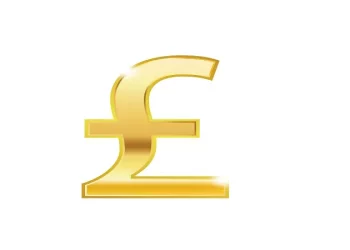The $500 bill holds a special place in U.S. currency history due to its rarity and unique design. If you come across a $500 bill, it’s important to verify its authenticity to ensure its value and legitimacy. This article provides expert tips and techniques to help you determine if a $500 bill is real, enabling you to make informed decisions about its worth and potential investment.
1. Familiarize Yourself with Genuine Design Features
The first step in identifying a real $500 bill is to familiarize yourself with its genuine design features. Research the specific design elements, such as the portrait, seal, serial numbers, and signatures, featured on the bill during the time it was issued. Look for high-resolution images or official resources provided by government entities to understand the characteristics unique to authentic $500 bills.
2. Feel the Paper Quality
The quality of the paper can be an indicator of authenticity. Real U.S. currency, including $500 bills, is printed on high-quality, durable paper that has a distinctive feel. Genuine bills should have a slightly rough texture and be relatively stiff, as they are made from a blend of cotton and linen fibers. Counterfeit bills may feel smoother or have a different texture due to the use of lower-quality materials.
3. Examine the Security Thread
All U.S. currency, including $500 bills, contains a security thread embedded within the paper. Hold the bill up to a light source and look for a thin, vertical strip running from top to bottom. The thread should be embedded within the paper and appear as a continuous line. Counterfeit bills may lack this security feature or have an inconsistent or fake security thread that is simply printed on the surface.
4. Check the Watermark
Another important security feature on genuine U.S. currency is the watermark. Hold the bill up to a light source and look for a faint image of the portrait featured on the bill. The watermark should be visible on both sides of the bill, appearing lighter than the rest of the paper. Counterfeit bills may lack a watermark or have a blurry or inconsistent watermark that is not aligned with the portrait.
5. Examine the Microprinting
Genuine $500 bills feature microprinting, which is the printing of tiny, intricate text that is difficult to reproduce accurately. Use a magnifying glass or a strong magnifying app on your smartphone to inspect the bill closely. Look for tiny text within the design elements, such as the borders, portraits, or seals. The microprinting should be sharp, clear, and easily readable. Counterfeit bills may lack microprinting or have blurred, smudged, or indistinct text.
6. Verify the Security Thread Color
The security thread in genuine $500 bills has a specific color that changes when viewed from different angles. Tilt the bill to observe the security thread, which should shift in color between green and black. Counterfeit bills may have a different color or lack this color-shifting effect, indicating a potential forgery.
7. Look for Ultraviolet (UV) Features
Under ultraviolet (UV) light, genuine U.S. currency exhibits specific fluorescent features that are difficult to replicate accurately. Use a UV light or a UV detection device to examine the $500 bill. Authentic bills will display fluorescent ink that glows under UV light, revealing hidden symbols, numbers, or patterns. Counterfeit bills may lack these UV features or exhibit inconsistent or non-fluorescent markings.
8. Seek Professional Assistance
If you are unsure about the authenticity of a $500 bill, it is advisable to seek professional assistance. Contact your local bank, a reputable currency dealer, or a professional appraiser with expertise in rare and collectible currency. These individuals can provide expert opinions and employ specialized equipment to verify the bill’s authenticity.
Conclusion
Determining the authenticity of a $500 bill requires a keen eye, knowledge of genuine design features, and the use of specific techniques. Familiarize yourself with the unique elements of genuine $500 bills, such as the portrait, seal, and serial numbers. Pay attention to details such as the paper quality, security thread, watermark, microprinting, and UV features. If you have any doubts, seek professional assistance from trusted sources with expertise in rare and collectible currency. By applying these expert tips and techniques, you can make informed decisions regarding the authenticity and value of a $500 bill.
Related Topics:




























